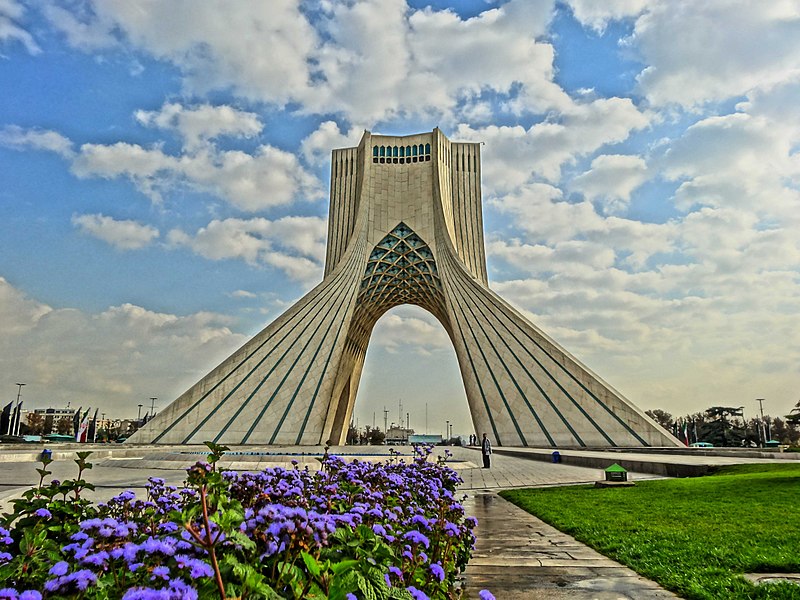Standing guard like a sentry at the gates of Tehran, Iran, is the impressive Azadi Tower (Freedom Tower), built in 1971 and comprised of eight thousand white marble blocks. A combination of both Islamic and Sassanid architectural styles, the fifty-foot high tower commemorates the formation of the Persian Empire and is an interesting combination of both modern and ancient cultures.
The tower is part of the Azadi cultural complex, located in Tehran’s 50,000-square-meter Azadi square, which is made up of a museum and several fountains.
The arch rises from Azadi Square mirroring the Elburz (Alborz) mountain range just north of the city. Though not as wondrous as the snowy peaks of Mount Damavand, it is a 148-foot-tall masterpiece of cut marble that marks the entrance to this historic city. iran tour
The audio – video hall of the complex which has been designed based on Iran`s geographical map displays the regional characteristics of Iran in so far as cultural, life style, religious and historical monuments are concerned. A mechanical conveyer allows the visitors to visit the hall in total comfort. Some art galleries and halls have been allocated to temporary fairs and exhibitions.
The architect, Hossein Amanat, won a competition to design the monument, which combines elements of Sassanid and Islamic architecture. It is part of the Azadi cultural complex, located in Tehran’s Azadi Square in an area of some 50,000 m². There are several fountains around the base of the tower and a museum underground. The iconic Monument des Martyrs in Algiers (built, 1982) shows a strong influence by this monument, in its general design as well as its details.
Built with white marble stone from the Esfahan region, there are eight thousand blocks of stone. The stones were all located and supplied by Ghanbar Rahimi, whose knowledge of the quarries was second to none and who was known as “Soltan-e-Sang-e-Iran“. The shape of each of the blocks was calculated by a computer, and programmed to include all the instructions for the building’s work. The actual construction of the tower was carried out, and supervised by Iran’s finest master stonemason, Ghaffar Davarpanah Varnosfaderani. The main financing was provided by a group of five hundred Iranian industrialists. The inauguration took place on October 16, 1971.
Built in 1971 in commemoration of the 2,500th anniversary of the Persian Empire, this “Gateway into Iran” was named the Shahyad Tower, meaning “Kings’ Memorial”, but was dubbed Azadi (Freedom) after the Iranian Revolution of 1979. Originally intended to remind coming generations of the achievements of modern Iran under the Pahlavi dynasty, it has become a symbol of the country’s revival. It is 50 meters (148 ft) tall and completely clad in cut marble.

Comment (0)